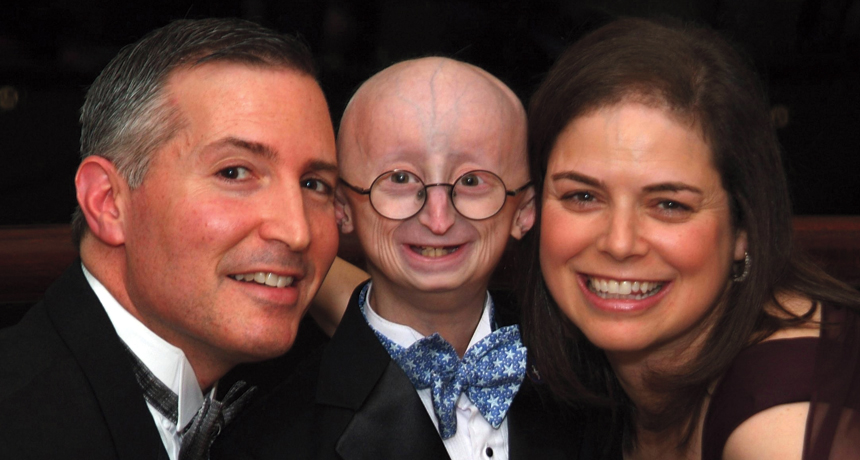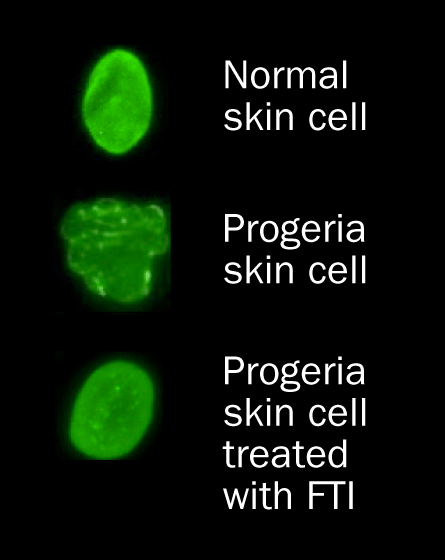
Leslie Gordon (right, with son Sam and husband Scott Berns) began studying progeria after her son’s diagnosis.
Progeria Research Foundation
- More than 2 years ago
When a child is diagnosed with a mysterious disease, the lives of everyone in the family change. But when Leslie Gordon’s son Sam was diagnosed with a rare premature aging disease, the lives of dozens of families changed. As a pediatrician and medical researcher at Brown University, Gordon set out to learn what caused her son’s condition and how to treat it.

Sam looked fine when he was born, but he didn’t grow the way other babies do. His primary teeth didn’t come in on time, and he seemed a bit stiff. Doctors couldn’t find anything in particular wrong with him, but Gordon knew something was amiss. “I’m his mother,” she thought. “I know there’s something wrong here.”
It turned out that Sam has Hutchinson-Gilford progeria syndrome, an extremely rare genetic disease that affects about one in 4 million to 8 million children. An estimated 200 children in the world have the disease. Children with progeria age rapidly, dying on average by age 13.
Gordon had never heard of progeria when her toddler was diagnosed. “Not a word, not a whisper” was uttered about the disease in her medical school or graduate training. Doctors didn’t know what caused children with progeria to age rapidly and die of heart attacks or strokes, or how to treat the disease. “Research was a virtual void,” Gordon says. The National Institutes of Health had invested little in progeria studies.
That was in 1998. A year later, Gordon, along with her sister and husband, founded the Progeria Research Foundation. The foundation jump-started progeria research by building resources such as a cell and tissue bank that scientists can use to study the disease. Those resources contributed to the discovery of the genetic defect that leads to progeria.
The foundation has helped find 116 kids with the disease worldwide. Many of these children have been enrolled in clinical trials testing possible treatments. Among Gordon’s findings is that the kids show hardening of the arteries, even without high cholesterol levels. The sort of progress that the foundation has sparked usually takes decades. “It’s an unprecedented pace, on paper, and I’m thrilled,” Gordon says.
A documentary about Sam, Gordon and the foundation called Life According to Sam premiered at the 2013 Sundance Film Festival and is scheduled to air on HBO in October. Today, Gordon reports that Sam is 16 years old and has just earned an Eagle Scout badge. But asked if she’s satisfied with the progress of research, Gordon says, “No. It’s never going to be fast enough while there are still children dying of progeria.”






